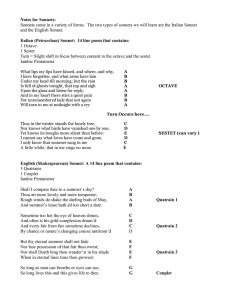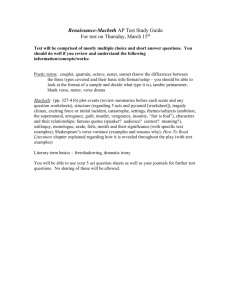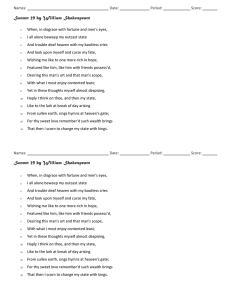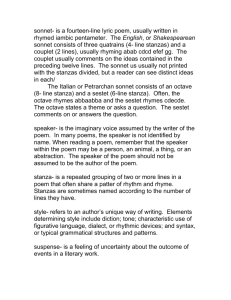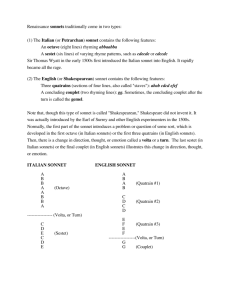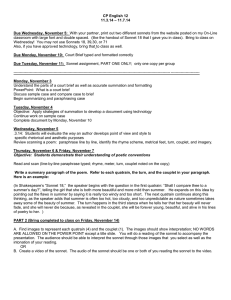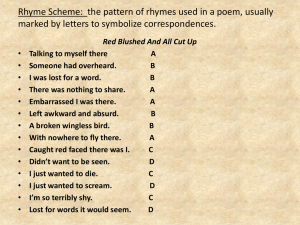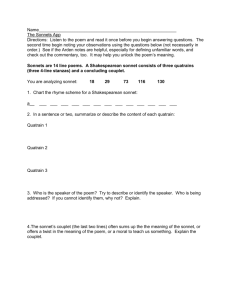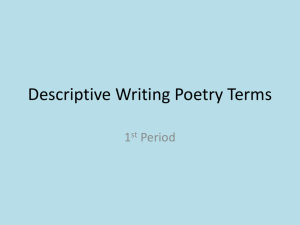THE SONNET The sonnet is a lyrical poem of fourteen lines, highly
advertisement
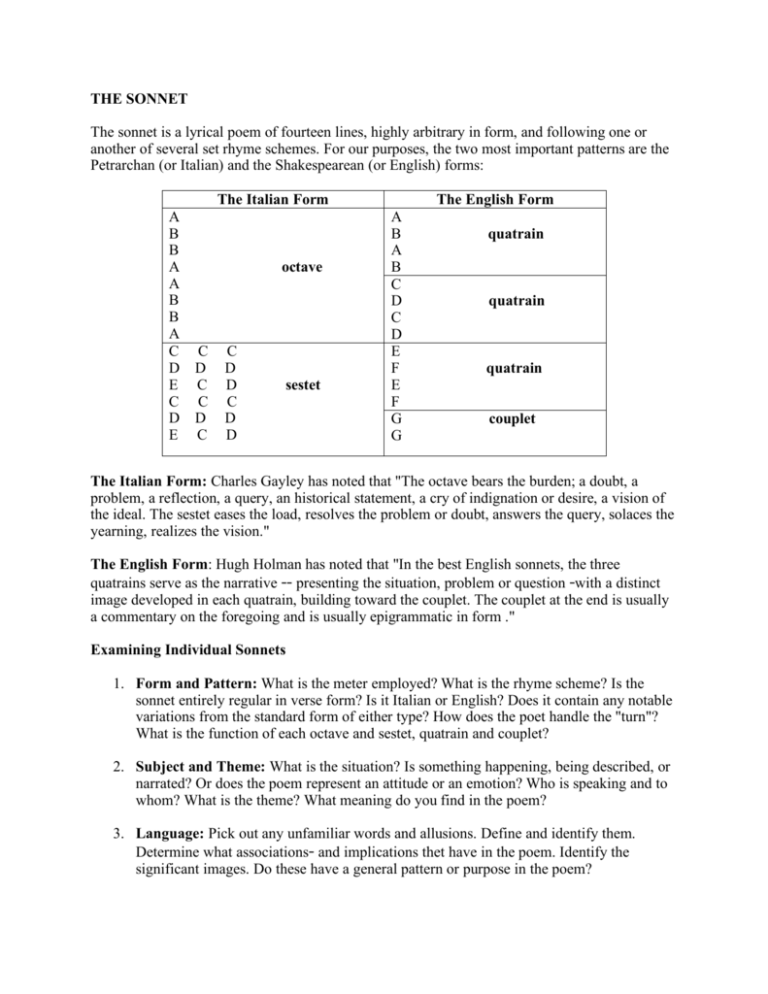
THE SONNET The sonnet is a lyrical poem of fourteen lines, highly arbitrary in form, and following one or another of several set rhyme schemes. For our purposes, the two most important patterns are the Petrarchan (or Italian) and the Shakespearean (or English) forms: The Italian Form A B B A A B B A C D E C D E octave C D C C D C C D D C D D sestet The English Form A B A B C D C D E F E F G G quatrain quatrain quatrain couplet The Italian Form: Charles Gayley has noted that "The octave bears the burden; a doubt, a problem, a reflection, a query, an historical statement, a cry of indignation or desire, a vision of the ideal. The sestet eases the load, resolves the problem or doubt, answers the query, solaces the yearning, realizes the vision." The English Form: Hugh Holman has noted that "In the best English sonnets, the three quatrains serve as the narrative -- presenting the situation, problem or question -with a distinct image developed in each quatrain, building toward the couplet. The couplet at the end is usually a commentary on the foregoing and is usually epigrammatic in form ." Examining Individual Sonnets 1. Form and Pattern: What is the meter employed? What is the rhyme scheme? Is the sonnet entirely regular in verse form? Is it Italian or English? Does it contain any notable variations from the standard form of either type? How does the poet handle the "turn"? What is the function of each octave and sestet, quatrain and couplet? 2. Subject and Theme: What is the situation? Is something happening, being described, or narrated? Or does the poem represent an attitude or an emotion? Who is speaking and to whom? What is the theme? What meaning do you find in the poem? 3. Language: Pick out any unfamiliar words and allusions. Define and identify them. Determine what associations- and implications thet have in the poem. Identify the significant images. Do these have a general pattern or purpose in the poem?

